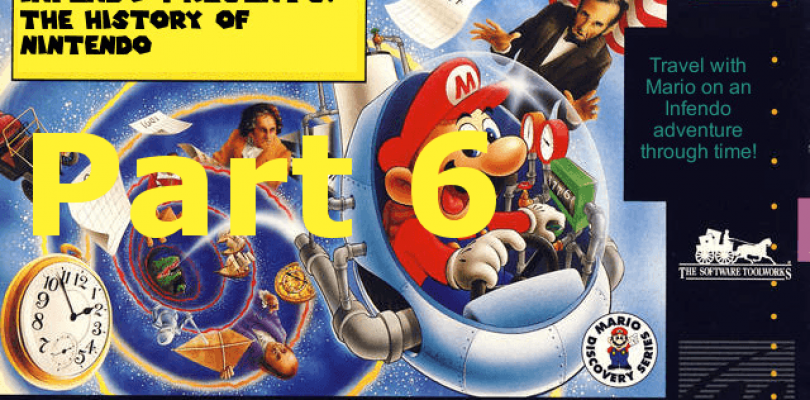Welcome to the Infendo Presents: The History of Nintendo! Join us as we chronicle Nintendo from their humble hanafuda beginnings, to the dominance of the Wii and DS and beyond!
To this point in its history, Nintendo has made almost no poor business decisions, almost to the point of clairvoyance. Aside from an early mishap by a young Hiroshi Yamauchi in the Laser Clay Shooting System, Nintendo has made some pretty A+ decisions.
Nintendo had managed to move over 229 million units between the NES, Gameboy line, and Super Nintendo. Could Nintendo do no wrong? Many at the time thought so, but by the middle of the 1990’s, Nintendo began to show some chinks in the armor.
[youtube]https://youtu.be/FhbpBMzjE1A[/youtube]
There is a very convoluted history behind what happened between Nintendo and Gunpei Yokoi in the latter half of the 1990’s, and it all started with the Virtual Boy.
Already a legend within the company, Yokoi was now general manager of Nintendo’s R&D1. Always one to innovate, Yokoi was looking to enhance his, and Nintendo’s, reputation. Seeing the Virtual Boy as an avenue for Nintendo to showcase itself as a leader in technology, Nintendo would unveil the console to The New York Times on November 13, 1994.
Nintendo knew that the only way for the console to succeed, people would have to get their eyes (literally) on it. Reportedly, Nintendo spend $25 on early promotion of the console. After showcasing the Virtual Boy at the 1995 CES, the console would launch first in Japan on July 21, 1995, then later in North America on August 14, 1995.
Needless to say, the console was a failure, not even managing to sell a million units globally. Red and black were definitely not in season.
Ultimately, Nintendo and Yokoi would part ways as Yokoi would create his own company, Koto Laboratory. Bandai would approach Yokoi to create a new handheld, the WonderSwan, but tragically, he would never live to see its completion. Gunpei Yokoi died in 1997 in a car accident before the WonderSwan would release in 1999.
[youtube]https://youtu.be/dCV6RusogAk[/youtube]
Another snafu on Nintendo’s part gave birth to what would turn out to be Nintendo’s biggest competition.
Originally conceived when a contract between Sony and Nintendo was signed in 1988, Sony was to produce a CD-ROM add-on to the SNES. After multiple years in development, and many prototypes, the Nintendo Playstation was the console that never was.
Much of the reason for it’s demise was a disagreement on the two companies over control of the licensing (read: money). Of course, Sony went on their own Nintendo-less way, and Nintendo would stick to the cartridge format for the Nintendo 64.
By the time the Nintendo 64 would launch in 1996, the Playstation was already on the market for two years and selling phenomenally. The decision by Sony to release a console using the cheaper CD format also proved to be wise, as Playstation games were regularly priced well under their N64 counterparts.
[youtube]https://www.youtube.com/watch?v=7NnEWjcjW80[/youtube]
The Nintendo 64 was not what many would call an enormous financial success, but who cares. Do you own Nintendo stock? To me, all that matter is Mario 64, Ocarina of Time, and Goldeneye 007. Some of my favorite video game memories are on the Nintendo 64.
Despite its poor sales, Nintendo managed to impact the industry with the N64 in more ways than one. After the Rumble Pak launch alongside Star Fox 64, Sony introduced rumble in the form of the DualShock. The Nintendo 64, unlike the Playstation, launched with an analog stick. Of course they would later one up (I mean 1-up) Nintendo by adding a second stick to their own DualShock, but, you know, Nintendo was first damn it!
It can’t be argued that it was a hard time to be Nintendo home console fan at the time. Games were few, and far between, mostly because of the cost progressiveness of the cartridge format compared to the much more attractive CD. Nintendo would of course move to its own proprietary disk format for its next console, but atop the home console market they were not.
But the games. The big N still had the best developers in the industry, and lots of us stuck around to play their games.
Join us Monday as we cover Nintendo’s first real upgrade to the Game Boy line.

